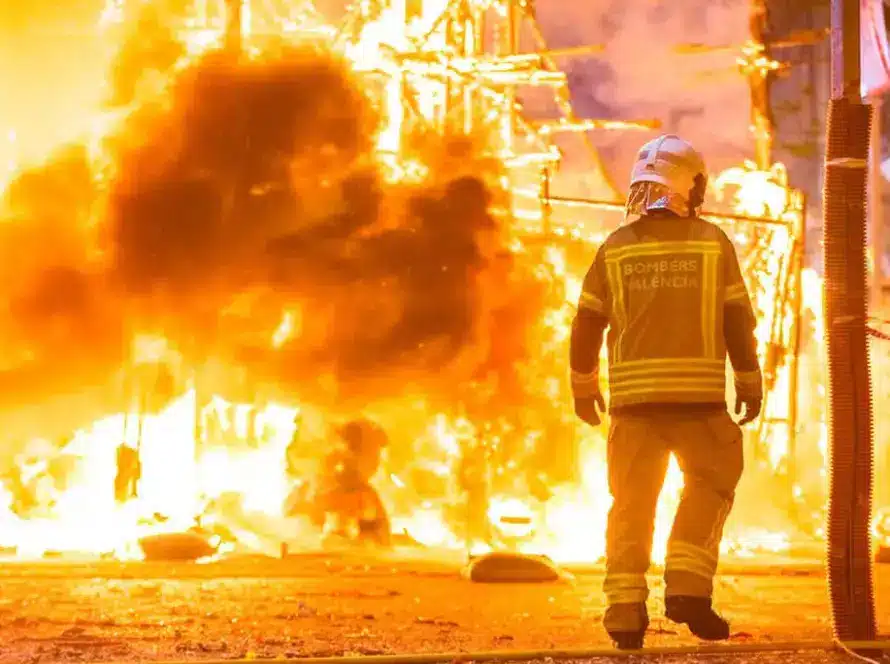You’ve had the fire risk assessment done. The paperwork is in the drawer. The building passed. And life moves on—until something changes. Maybe a fire door gets replaced, a new piece of equipment gets installed, or someone moves furniture in front of an emergency exit. No one updates the report. Weeks pass. Then, there’s a spot inspection, or worse, an incident, and suddenly that box you ticked six months ago doesn’t mean much.
This is the gap most businesses fall into: the space between compliance and actual control.
What Does the Law Actually Expect from You?
In the UK, the fire safety rules aren’t new. They’re laid out plainly in the Regulatory Reform (Fire Safety) Order 2005. This law replaced the old system of fire certificates with a simpler but more demanding one: do your own risk assessment, and keep it up to date. The law puts that responsibility on a person—or more often, a group of people—within each business. They’re known as the “Responsible Person,” but it rarely falls to just one individual. It’s typically shared across teams in operations, maintenance, or facilities.
The Fire Safety (England) Regulations 2022 added even more detail, and the Building Safety Act 2022 has pushed the needle further still. But the principle stays the same: you’re expected to understand your risks and act on them.
And yet, many businesses still treat the fire risk assessment like a formality. It gets done once a year, often in isolation, and rarely revisited unless someone remembers.
Step 1: Rethink the Fire Risk Assessment
The government’s guidance recommends a five-step approach for assessing fire risk: identify hazards, identify people at risk, evaluate and reduce the risk, record your findings, and review the plan regularly. It’s a solid model. But here’s the problem: what happens after the assessment is written?
Too often, the report goes into a folder, physical or digital, and sits there. Meanwhile, the site changes. Repairs get made. Furniture moves. New staff join. A fire extinguisher expires. Unless someone’s keeping close track and updating the record, your risk assessment quickly becomes outdated—and legally meaningless.
The better approach is to treat the assessment as a live tool, not a static document. That means updates happen when conditions change, not months later when someone gets around to scheduling the next review.
Step 2: Make use of Digital Tools
When everything’s stored on paper or even in spreadsheets, keeping things up to date becomes a manual job. That’s where mistakes slip in. A missed inspection. An expired certificate. A blocked exit no one logged. And those small errors add up—especially when an audit or emergency brings them to light.
This is where using the right software can change everything. A good system lets you update risk assessments instantly, track remedial actions, store maintenance logs, certificates, photos, and even training records in one place. You can see what’s been done, what’s due, and who’s responsible—without having to chase people down or dig through file cabinets.
It’s not about being high-tech. It’s about being clear, connected, and current.
Step 3: Train the People Who Will Actually Respond
The law puts fire safety responsibility on a “Responsible Person,” but real safety depends on everyone. If your team doesn’t know what the fire plan is, where the exits are, or what to do in a drill, then the best plan in the world won’t help much. The Health and Safety Executive also offers practical advice for fire safety in construction and maintenance environments guidance, where risks can shift quickly.
Training is part of the requirement. That means new hires need to understand the basics on day one. People in specific roles—like those working with flammable materials or equipment—need more detailed instruction. And it doesn’t stop after onboarding. Refresher training, drills, and routine checks keep people sharp and help identify issues before they grow into risks.
Good systems make this easier. They can send reminders for overdue training, store records of who’s been trained on what, and keep everything accessible in case an inspector asks.
Step 4: Spread the Cost Instead of Chasing Deadlines
Budgeting for fire safety isn’t always straightforward. Sometimes things break. Sometimes inspections find issues that need fixing right away. But a lot of the expense around fire risk can be managed with a bit of forward planning.
If your assessments are current and your system tracks maintenance and remedial work, you can schedule jobs when it makes sense—not when the deadline is already breathing down your neck. That helps spread the cost, avoid disruption, and reduce last-minute panic.
It also makes the budget conversations easier. When you can show what’s coming up, what’s already been done, and what the risks are if you delay, it’s much easier to get buy-in from finance or leadership.
Step 5: Let the System Remind You—But Stay in Charge
Tools like Vision Pro Software can be programmed to alert the right people when something’s due—a check, a fix, a training update. That means things don’t slip through the cracks just because someone forgot to set a calendar reminder. But automation isn’t a replacement for responsibility. It’s support. The goal isn’t to hand everything over to a system. It’s to make sure the people responsible have the right information at the right time.
Used well, these tools reduce admin, give clearer oversight, and help teams act faster when something changes. They don’t remove the need for judgment or planning. They just make it easier to focus on what matters.
Are You Managing Risk—or Just Meeting Minimums?
There’s a big difference between being compliant and being prepared. Compliance is a legal floor. You have to meet it, or you’re breaking the law. But preparation is what protects your business, your people, and your reputation when something unexpected happens.
Treating fire safety as a once-a-year task is risky, not just legally, but practically. The conditions that create fire risks don’t care about your calendar. They change when the workplace changes, when people come and go, or when routine maintenance gets skipped.
So the real challenge is building fire risk management into your regular operations. Not as an extra chore, but as part of how you run the place. That doesn’t have to be complicated or expensive. It just has to be consistent.
A Practical Approach to Staying in Control
Fire risk management is not a paperwork exercise. It’s not about looking good in an audit. It’s about running your building or your business in a way that keeps people safe and avoids nasty surprises. That means knowing the law, staying current with your risk assessments, using the right tools, and making sure the people involved are trained and informed.
You don’t need to overhaul everything overnight. But if the only time fire safety comes up is when an inspector is due, it might be time to rethink your approach.
If you want a system that helps make that rethink practical—something that fits with how your team already works—Vision Pro Software is one option worth considering. It won’t do the thinking for you, but it will keep the process clear, the data current, and the responsibilities visible. Which, in the long run, makes it easier to stay not just compliant, but actually in control.
To learn how Vision Pro Software can support your fire risk management strategy, contact the ACMS team who will be happy to arrange a consultation tailored to your organisation’s needs.



